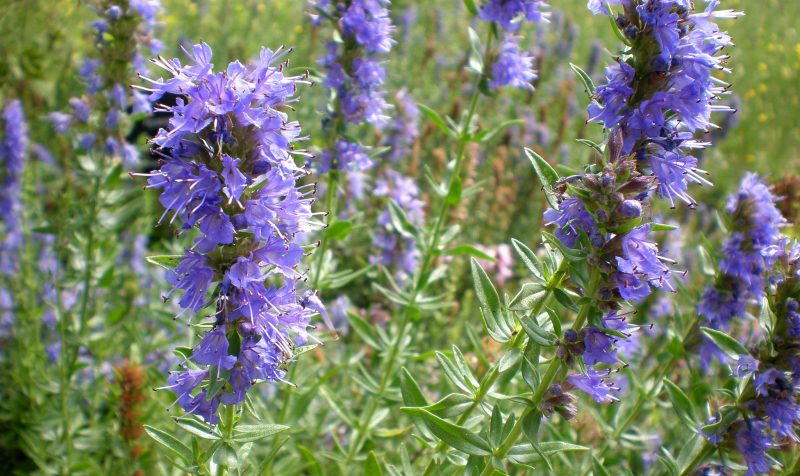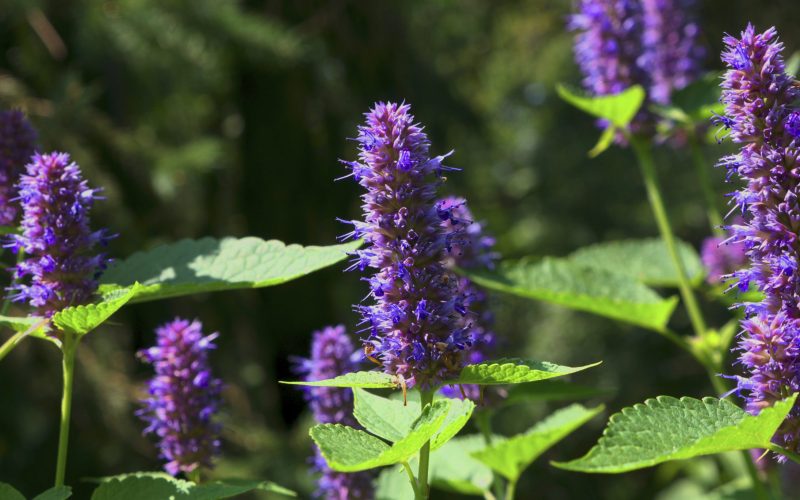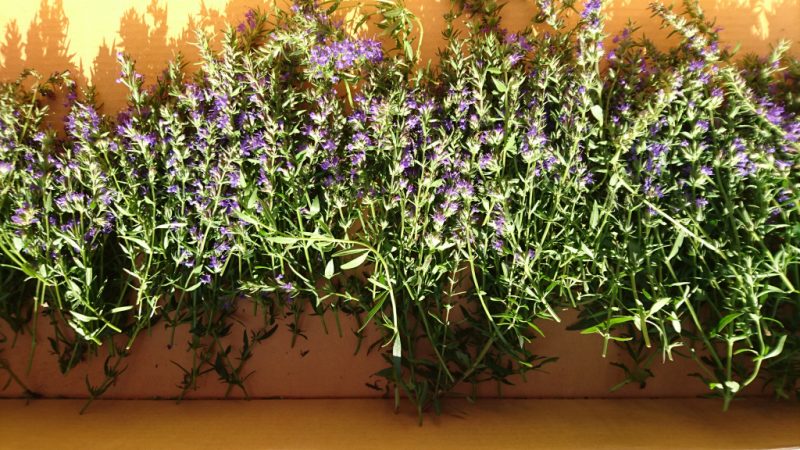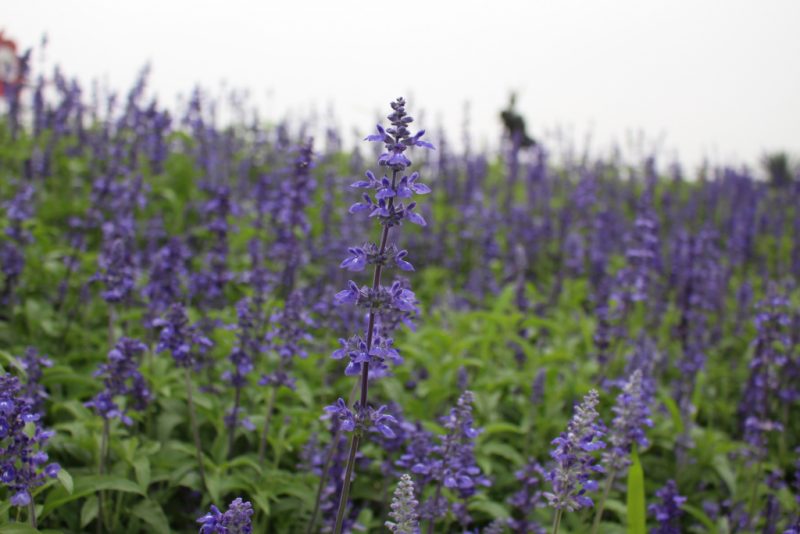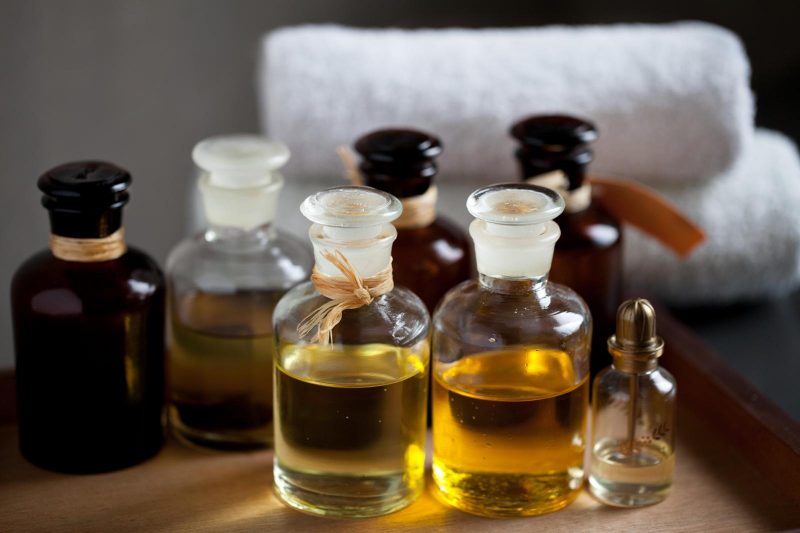Hyssop is a medicinal plant, which healers have healed people since ancient times. Today, its beneficial properties are used in cosmetology and medicine. People grow this herb as a medicinal, spicy, melliferous and simply ornamental plant. What are the hyssop medicinal properties and contraindications we will consider below.
Material Content:
Plant description
Hyssop is a small shrub. On its stem, leaves in the form of lacents are located opposite to each other. A pinkish tint of flowers surround the base of the leaves. It has a strong spicy smell. Height reaches up to 70 cm.
The homeland of the medicinal plant is Mediterranean countries, where it grows freely in meadows and hills. In Europe, hyssop is grown as a decorative, essential oil and spicy plant. In our country, it can be found in the foothills of the Caucasus.
Hyssop: healing and beneficial properties
The beneficial qualities of the grass determines its composition.
Hyssop consists of:
- essential oil;
- resins;
- diosmin;
- hesperidin;
- hyssopine;
Young grass contains large amounts of ascorbic and caffeic acid. It is also rich in complex compounds like: flavonoids, aldehydes, etc. The uniqueness of the product lies in the fact that at each stage of its life cycle it includes a completely different composition of complex compounds. During flowering, the grass contains the highest concentration of all substances.
Thanks to the list of components that make up the plant, it is a multifunctional tool that has the following actions:
- antibacterial;
- anti-inflammatory;
- diuretic;
- antispasmodic;
- regenerative;
- antiseptic;
- nootropic;
- sedative;
- antipyretic;
More often, the herb is used during dry and wet coughs. It promotes liquefaction and sputum discharge. The tool, prepared in the form of tinctures and decoctions, helps not only with bronchitis, but also effectively removes inflammation from the digestive tract.
What diseases does it help
Hyssop is recommended for the treatment of:
- bronchitis;
- tuberculosis
- asthma
- various wounds;
- hematomas, scars, bruises, injuries;
- fungal lesions and inflammatory processes;
- symptoms of menopause;
- Gastrointestinal tract;
- excessive sweating;
- rheumatism;
- genitourinary system
To speed up the healing process, the herb should be combined with other useful products like: raspberries, honey, calendula, licorice.
Benefits for men, women
From ancient times it is known that the hyssop herb increases libido in men. It is used as a natural aphrodisiac. To prepare the product, you just need to grind the flowers and leaves of the plant, and then pour white wine. The ratio is taken 10 tablespoons per 1 liter of white wine. The mixture should be infused for 10 days. It is important to shake the container daily. Take 50 ml in the evening a few hours before bedtime.
For the female body, herbal decoction from hyssop also has a beneficial effect. It effectively relieves pain during menstruation.
To prepare a healing broth, you need to mix in equal proportions of grass:
- hyssop;
- Linden blossom;
- marjoram;
In the obtained collection of herbs, add water and boil for 5 minutes. Two days before the expected menstruation, you can use the solution in one glass twice a day.
Also, the plant helps to relieve symptoms of menopause.
After regular consumption of tea with hyssop is observed:
- general condition improvement;
- sleep recovery;
- a decrease in the intensity of the tides;
- elimination of sweating;
With erosion, it is recommended that the procedure be douching with a decoction of grass.
Herb Applications
Hyssop can convey its healing properties in fresh and dried form. Traditional medicine prefers young shoots more. In cosmetology, the essential oils extracted from the stems and leaves of hyssop are appreciated. In cooking, the plant is used as a spice.
In medicine
The healing properties of hyssop are unlimited:
- It is often used as a means of increasing appetite.
- Eliminates heaviness in the stomach and prevents bloating.
- Relieves cramps and colic.
- Memory improves, after treatment, the concentration of attention increases markedly, cerebral circulation normalizes.
- Helps strengthen blood vessels.
In folk medicine, hyssop is often combined with other herbs or products.
It can be prepared as:
- infusion;
- decoction;
- in combination with other herbs;
You can brew chopped grass, and before use, mix the resulting broth with honey to make it easier to drink. For external use, it should be used as a warm compress.
Before using hyssop in any form inside for treatment purposes, you need to discuss with your doctor in advance. The grass contains a high concentration of potent substances, uncontrolled intake can lead to various complications.
In cosmetology
For cosmetic purposes, tonics and tinctures are made more from medicinal herbs, which are:
- reduce swelling;
- struggling with acne;
- relieve hyperemia;
Oils are used for relaxation. In the fight against aging skin, masks with freshly cut grass are used. Also, the plant is used in perfumery products. It is widely used in the manufacture of perfumes and eau de toilette.
How to use hyssop
Various decoctions, tinctures, teas, syrups, compresses, etc. are prepared from the plant. For therapeutic purposes, traditional medicine suggests the use of hydrolyte and essential oil. We will tell you more about this.
Hydrolate
The product is produced during steam distillation.
For the manufacture you need to take:
- absolutely pure plant without any chemical treatments;
- distilled or filtered water;
- as much ice as possible;
- a large pan with a lid;
- heat resistant bowl;
- capacity for the final product;
Production progress:
- Rinse the plant thoroughly under running water.
- At the bottom of a large pan put a heat-resistant bowl.
- Pour grass into the pan and pour water in a ratio of 1: 1.
- Set to a slow fire.
- Close the pan from the top with a lid on the back side so that flower water can drain into a bowl that is laid on the bottom of the dishes.
- On top of the lid, put ice in the bag on the outside. As it melts, it must be replaced.
- The whole procedure takes about two hours.
- The prepared hydrolyte must be drained into a clean container and stored in the refrigerator.
The useful qualities of this tool are endless. It stores all the important components that are contained in the hyssop. It should be taken 1 teaspoon in the morning on an empty stomach for one month. Hydrolate is also used as compresses for eczema, bruising and non-healing wounds. The product effectively relieves itching of the scalp and prevents the formation of dandruff.
Oil
Hyssop herb essential oil is a very expensive treat. It is not commercially available in all pharmacies. It is made from the flowers and leaves of a plant. The method of obtaining the product is similar to the manufacture of hydrolyte. Oil leaves up to 0.2%.
The product is mainly used externally. They can even reduce corns and existing warts. When taken orally, the recommended dose is 1 drop twice a day. It is easier to drink if you mix it with honey or jam, and then drink plenty of water.
Contraindications
Before you start treatment with drugs, which include hyssop, you should familiarize yourself with the contraindications.
Hyssop is a slightly poisonous herb, so it is important to adhere to the dosage prescribed by the doctor.
Reception of a grass is contraindicated to people suffering:
- epilepsy;
- neuropathy;
- hypertension
- dyspeptic disorders;
It is not recommended to use the drug for children under two years of age and women during pregnancy and lactation. With an overdose, symptoms appear as muscle cramps.
Conclusion
Hyssop people know medicinal herbs from all over the world. In many countries, the plant has been included in medical guides. But in Russia, traditional healers use it, and traditional medicine has only begun to look closely.


